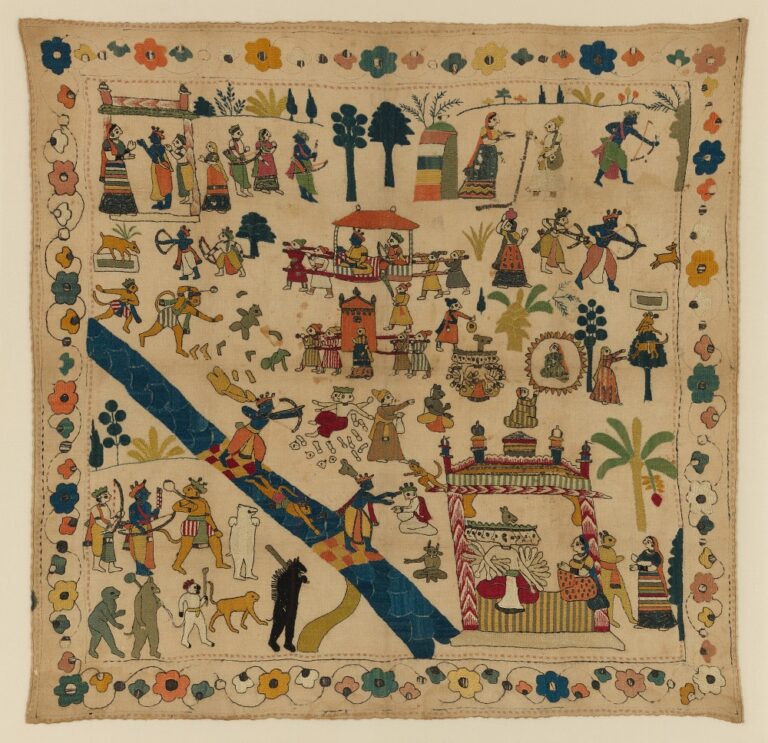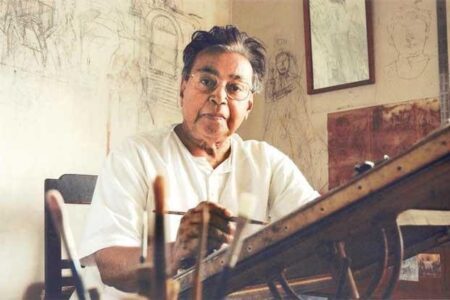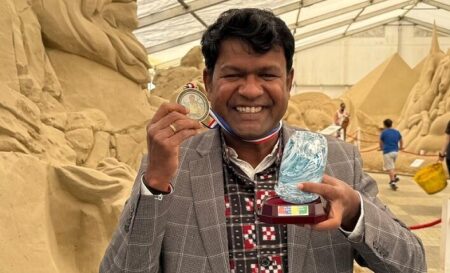With the change in leisure time of women, rumals went through a tough phase.
Rumal, a piece of cloth, can tell a story. When it is spotted with embroideries, inspired by the Pahari paintings, the square or oblong piece of cloth assumes a new meaning. Yes, a rumal or coverlet gains more sheen when it is adorned with the Pahari themes.
Rumals were an integral part of the local culture in India, while serving the cause of art as well. Their birth in the sub-Himalayan regions of India sounds more interesting when specimens found across the world are added to it.
Once upon a time, rumals were produced with great fervour but with time, the patronage reduced. With the leisure time of women, who were the main producers, changing and the Pahari painting system itself declining, the popularity of rumals took a permanent beating.
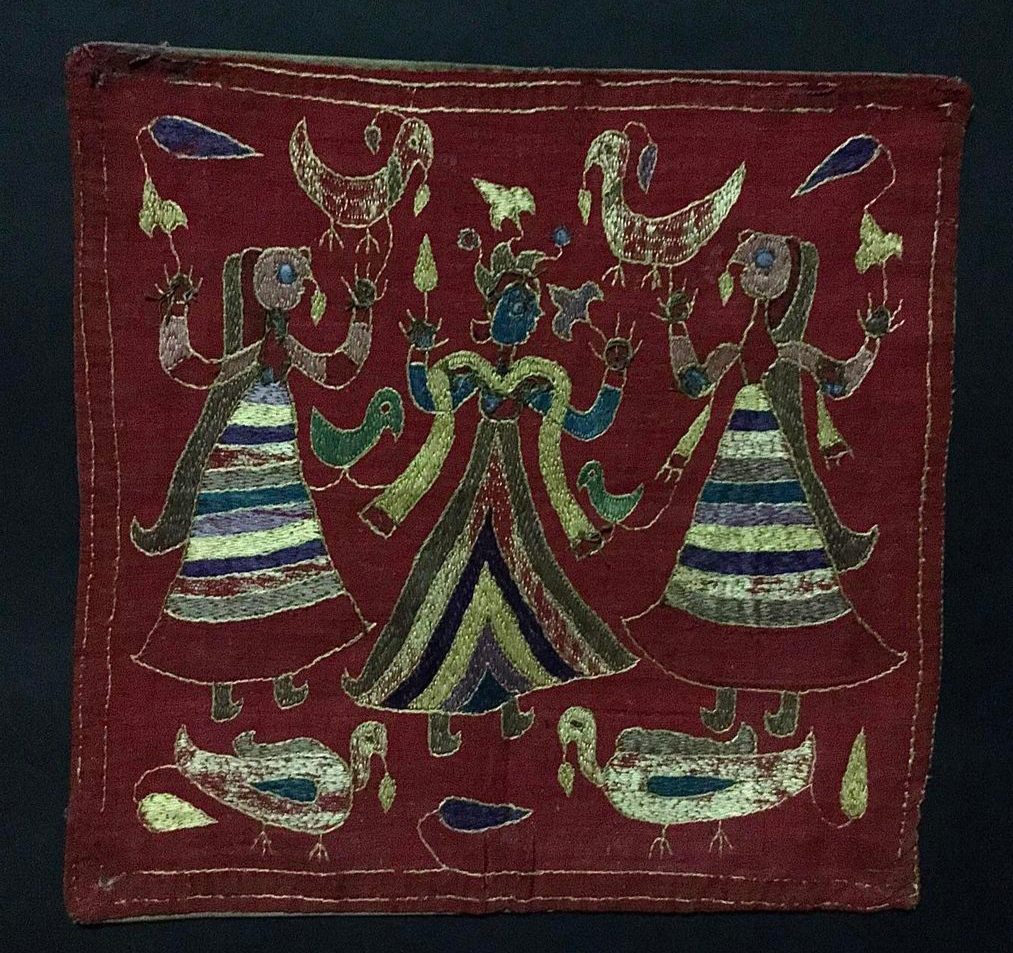
Museum of Folk, Tribal and Neglected Art, Gurugram, Haryana, India.
But the surviving pieces still enthrall and have exotic stories attached to them. Rumal means kerchief in Persian, a widely used language at that time in the subcontinent. The Pahari regions came under the cultural influence of Persia, Turkey and the Mughal Empire and they were apparently reflected on rumals.
The hilly ancestry
Both rumals and the Pahari painting trace a hilly ancestry. Pahari means pertaining to hills. Till the 19th century, it was undertaken mostly in miniature forms in the Himalayan kingdoms of Basohli, Mankot, Nurpur, Chamba, Kangra, Guler, Mandi and Garhwal.

The rumal embroidery was common in places of Kangra, Kulu, Nurpur, Mandi, Bilasspur, Suket Basohli and Jammu, outside of Himachal Pradesh in northern India.
When the Rajputs, the warrior class, came to Himachal Pradesh from the neighbouring states of Gujarat and Rajasthan, embroidered cholis or blouses became an added attraction. Embroidery has been an intrinsic part of India’s rich textile history with each region in the vast nation boasting its unique style.
In fact, it was the traditional art of the hilly region and rural housewives resorted to it at the foothills of the Shivalik mountains that stretched up to the Indus River. In the northern state of Himachal Pradesh, embroidery was used to serve the purpose of ‘covers’ or wraps for gifts in the 16th and 17th centuries. At that time, it was called ‘Chambarumal’, a well-designed embroidered fabric. How did the piece of cloth get its name? To a great extent, the credit goes to Dutch epigraphist Jean Philippe Vogel
Jean Vogel fathered Chambarumal
Vogel was the Superintendent of the Archaeological Survey of India in the early 20th century at Chamba. During his stay in India, he came across women in palaces and mansions embroidering on cloth and churning out marvelous pieces of art. He was fascinated and began collecting them. Vogel simply called them Chambarumal. The name has stuck to this day. It is now found in many collections across the world, both public and private.
It did not end there for Vogel, who travelled across Chamba and convinced the local Raja at that time, Raja Bhuri Singh (1904-1919), to build a museum to house Chambarumals from his palace and also the antiques and artefacts sourced by Vogel during his sojourns. Some insist that Chambarumal should be called Paharirumal. The Puranic tales, the Rasamandala, the Dashavatara, and the Nayika-bheda, and hunting scenes, elephants, horses, parrots, peacocks, deer, cranes, cypresses, and folk dances like tilcholi are showcased in the repertoire of Chambarumals or Paharirumals as we can probably call them. The Chamba ‘kasidari’ or ‘kadhai’ is a craft style with its own uniqueness, done on men’s sash or patka, cholis and headbands.
Bibi Janaki’s collections
The craftspeople drew the design outline before embroidering it on the fabric. Girls learnt it at a tender age at home.

Los Angeles, U S A.
In the beginning, it was a folk art until the royal intervention in the 18th century. Artists from the royal palace guided women to create a ‘painting with a needle.’ So, two styles — royal and folk — flourished. Because of the highly perishable nature of textiles, specimens prior to the 18th century are rare. Art historian Dr Subhashini, however, states that early works done by Bibi Janaki (1464-1518), sister of Guru Nanak (1469-1539), the founder of Sikhism, were preserved in a gurudwara in Himachal Pradesh till the 1960s.
Her works are divided into two parts, one depicting Harihara , the other related to the Puranic legends involving Lord Shiva. They are currently preserved at the Crafts Museum in New Delhi. There is another rumal, mentioned by Gagan Gambhir a professor from Jalandhar, made by her showcased at Gurudwara Dera Baba Nanak in Gurdaspur district in Punjab. Interestingly, it depicts scenes from daily life.
Style and Method
Mythological stories, episodes, animals and birds with bright colours often find a place. At times, metal threads are used to impart a scintillating effect. The embroidery on muslin was smaller but detailed. In khaddar, the stitches were bigger but with less detailing. Untwisted silk yarns are also used
.
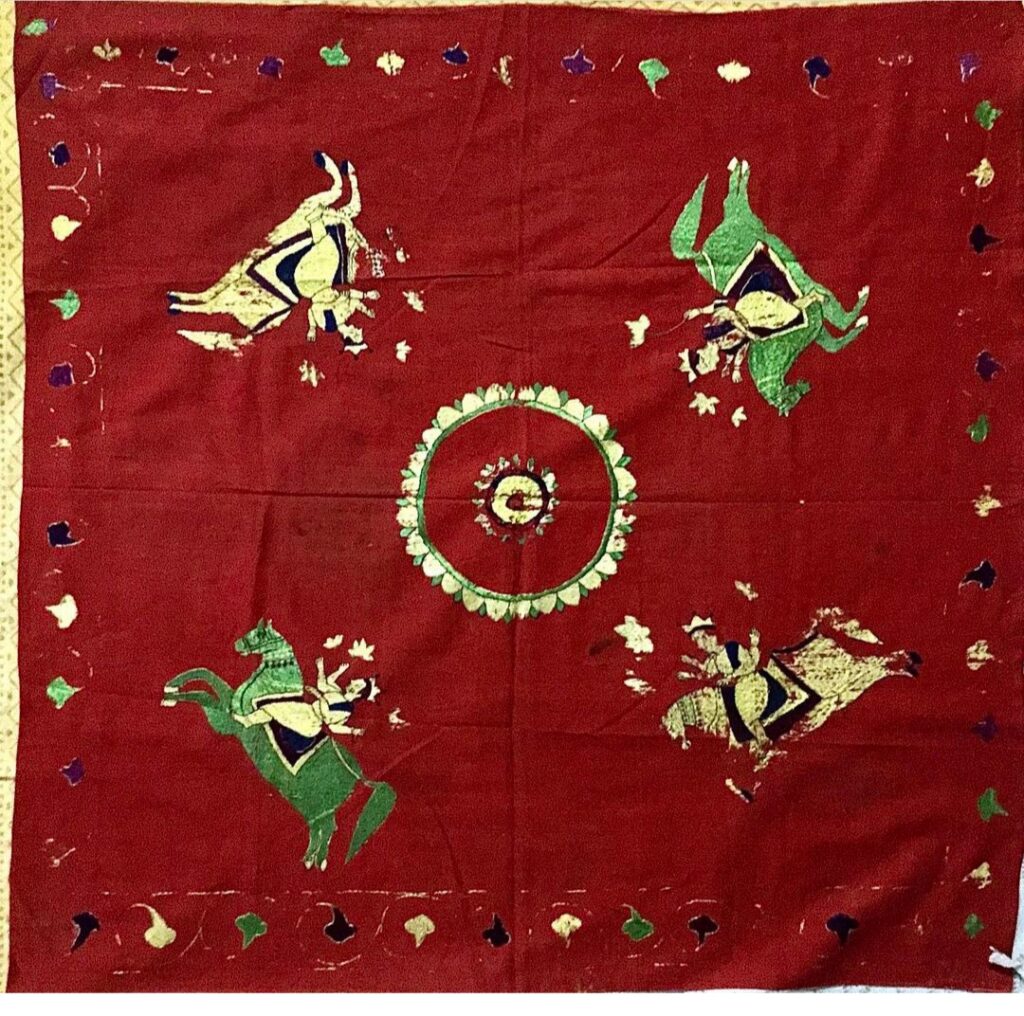
of K.C Aryan Museum of Folk, Tribal and Neglected Art, Gurugram, Haryana, India.
Rumals are durukha, meaning reversible. The embroidery mostly uses satin and double satin stitches. The long and short stitches are also executed on the fabric. The effect created by the drawing on the fabric was called ulikan.
Rumals were used as coverings for votive offerings to the deities. They were placed before the deities and also hung behind. The latter addition was rumalsare square or oblong pieces of cream-coloured cloth, made from fine muslin or mulmul or hand-spun khaddar or khadi. Their daily use included wrapping up gifts during weddings and festivals. The bride and groom too exchanged rumals as tokens of their love.
Rumals galore
In many rumals, we see a ‘mandala’ pattern like in the Ras dance of Lord Krishna with gopis. The lotus motif is well-used as a rosette in mandalarumals. Lord Shiva and his consort Parvati are depicted as well. Krishna with gopis depicts a frolicking Krishna with gopis or cowherd maidens of Braj. It is a popular theme found in the hills in Mandi. Bird motifs are also used. Lord Rama, Sita and Lakshmana are shown going through the forest in a ceremonial cover from Chamba. Trees adorn the rumal and some floral motifs add variety at the sides.

Los Angeles, U S A.
The artwork of equestrian figures from Mandi shows four royal horses juxtaposed on a bright red background. A circular lotus motif fills the centre and a floral border highlights the sides. Radha and Gopi adore Krishna in two registers. In the first, the Lord is being attended to by gopis, in the second, he seems to be in a frolic mood with Radha and a few gopis. They are holding fans and flowers. The rumal from Kangrais is filled with flowering plants and the borders have a floral scroll motif.
The Lord Ganesha circular rumal from Mandi depicts the favourite Hindu deity sitting on a lotus in a floral circular mandala. This rumal shows the Persian influence with the cypress motif meticulously depicted. Scenes from the Ramayana are an exquisite rumal from Chamba with details. They depict many episodes from the Ramayana. A floral border adds beauty to the artwork. Scenes of Sita and Hanuman depict Sita as a powerful Goddess along with Hanuman, an interesting rumal from either Chamba or probably Kangra. Floral motifs fill the rest of the space.

